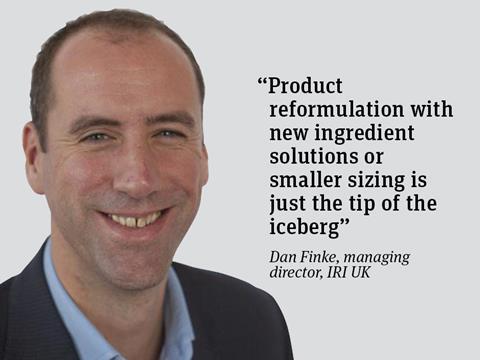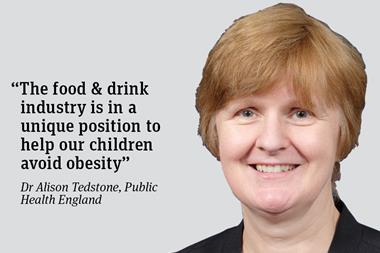The fight against Britain’s obesity crisis moved up a gear this month when Public Health England’s sugar tax came into force for soft drinks.
Although many soft drinks brands reformulated and shrunk sizes, a surprising number boldly ventured forth with price increases. Coke even launched a campaign to talk up the uniqueness of its Classic product in a bid to justify its new pricing as well as remind people about its great-tasting brand that hasn’t changed since it was launched more than 100 years ago.

So what will happen when PHE turns to the 18 food categories - from cooking sauces to pizza - it says will need to cut calories or reduce portion sizes by 20% in the next six years? It would be a mistake to think that product reformulation with new ingredient solutions or smaller sizing will be the end of it.
Complex analysis of millions of terabytes of data will be behind any major strategies that take place over the next few years as manufacturers collaborate with retailers on reformulation.
IRI’s analysis shows that changes to ranges stocked by retailers had already begun when the war was just about sugar. While high-sugar products are still a major contributor to NPD, there has been a notable reduction in overall ‘share of sugar’ sold by retailers, as fewer high-sugar SKUs have been placed on shelves in the past year. Other factors, such as consumer demand for healthier food options, are also behind these changes. Diet drinks gained share over the past two years, for example, while we have also seen growth in organic, vegetarian and gluten-free ranges.
More variables - including key attributes such as flavour and taste - will have to be introduced before pricing and promotional strategies can be agreed and retailers agree to stock products.
Our data experts are already re-coding millions of products sold in supermarkets so more detailed nutritional information, including calories, sugar, fat, satfat and salt can be modelled in order to provide better and more accurate information about the relative healthiness and success of individual SKUs.
Manufacturers will need to analyse how changes to product size, price and other reformulation will affect shopping baskets before they can agree whether to make changes to products. This will require more sophisticated econometric modelling as well as access to more data sources such as supply chain, shopper trip mission, loyalty data and digital activity.
Analytics technology with in-built machine learning will be a must for interrogating such large volumes of data. The outcome will ensure governments and manufacturers will be able to track how successful they have been in reducing the amount of sugar consumed in categories.
This is vital for anyone wanting to understand how best to formulate products, price them, promote them and distribute them in the most appropriate channels in this new world.
Still, the challenge of how to get an industry hooked on volume sales to focus on improving profits remains. In the case of calories, the devil is definitely in the data detail.
Dan Finke is MD of IRI UK



















No comments yet